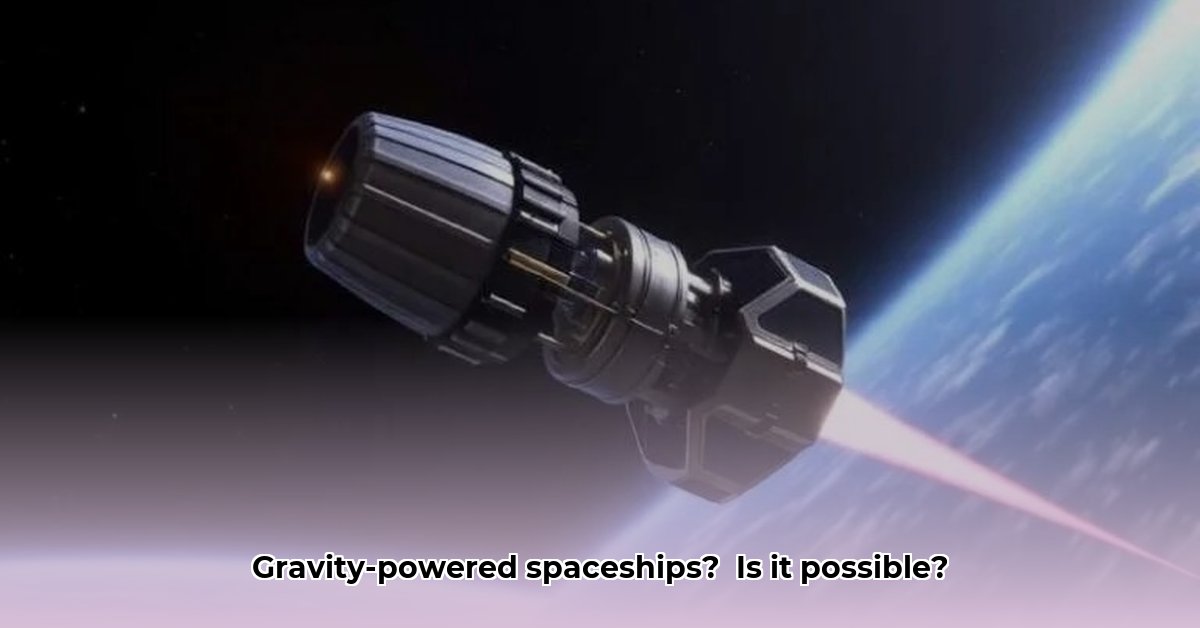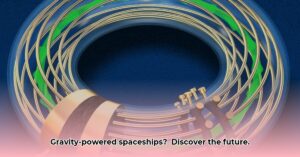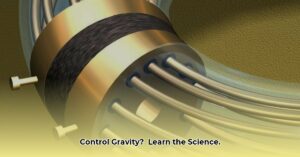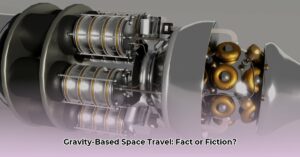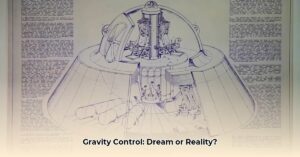Ever dreamt of soaring through the cosmos, propelled by the very fabric of space and time? That’s the tantalizing promise of gravitic propulsion, a theoretical concept that envisions spacecraft riding the currents of gravity itself. While it captures the imagination, the reality of manipulating gravity for space travel faces formidable, perhaps insurmountable, challenges. Let’s explore the science, the speculation, and the significant hurdles that stand between us and this seemingly impossible dream.
What is Gravitic Propulsion?
Gravitic propulsion isn’t about brief gravitational slingshots around planets, a technique we already use. It’s about generating and controlling our own gravitational fields, warping spacetime to create a continuous, effortless glide through the cosmos. Imagine sculpting the very fabric of the universe to chart a course to the stars – a cosmic highway paved with gravity.
This concept hinges on Einstein’s theory of general relativity, which describes gravity as the curvature of spacetime caused by mass and energy. Massive objects create “dips” in this fabric, and planets orbit stars by following these curves. Gravitic propulsion proposes creating and manipulating these dips, essentially building our own cosmic slides.
How Could It Theoretically Work?
One theoretical approach is the Alcubierre drive, which envisions a “warp bubble” compressing space in front of a spacecraft and expanding it behind. This wouldn’t propel the ship faster than light through space, but would warp space itself, carrying the ship along like a surfer on a wave. Another, more recent proposal by physicist Erik Lentz explores solitons, compact waves that could potentially warp spacetime without the need for vast amounts of theoretical “negative mass,” a key, yet undiscovered, component of the Alcubierre drive. However, both concepts remain highly speculative and require energy levels far beyond our current capabilities.
Here’s a comparison of different propulsion methods:
| Propulsion Method | Principle | FTL Potential | Feasibility |
|---|---|---|---|
| Chemical Rockets | Chemical reactions | No | Current Technology |
| Ion Drives | Electrically charged particles | No | Current Technology |
| Solar Sails | Photon momentum | No | Current Technology |
| Warp Drives (Alcubierre) | Spacetime warping (requires negative mass-energy density) | Yes (theoretically) | Highly speculative |
| Gravitic Propulsion (Solitons – Lentz) | Spacetime warping (potentially less exotic energy) | Yes (theoretically) | Highly speculative |
Faster-Than-Light Travel: A Cosmic Speed Limit?
Einstein’s theory of relativity poses a significant challenge to faster-than-light (FTL) travel. It states that nothing with mass can reach, let alone exceed, the speed of light. As an object approaches this speed, its energy requirements approach infinity. The Alcubierre drive and Lentz’s soliton concept offer theoretical workarounds by warping spacetime itself, but their feasibility remains highly uncertain.
The Challenges are Steep
Several major hurdles stand in the way of gravitic propulsion:
- Our Limited Grasp of Gravity: We don’t fully understand how gravity works, especially at the quantum level. This makes manipulating it a monumental challenge.
- Astronomical Energy Requirements: Warping spacetime would likely require energy comparable to the output of stars—far beyond our current capabilities.
- Material Limitations: We lack materials that could withstand the immense forces and energy densities involved.
- Technological Gaps: We currently don’t have the technology to generate and control the necessary gravitational fields. Concepts like “negative mass” and “gravitational shielding” remain theoretical.
- Experimentation Difficulties: Gravity is difficult to isolate and study, making it hard to test and refine our theories.
| Challenge | Description | Potential Solutions |
|---|---|---|
| Understanding Gravity | Our current models are incomplete. | Further research in quantum gravity, unified field theories. |
| Energy Requirements | Manipulating gravity requires astronomical energy levels. | Advanced energy generation, exploration of zero-point energy. |
| Material Limitations | Existing materials are insufficient. | Research into new materials with extreme properties. |
| Technological Gaps | We lack the technology to control gravitational fields. | Development of technologies based on theoretical concepts. |
| Experimentation Difficulties | Isolating gravity for study is challenging. | New experimental methods for studying gravitational effects. |
The Biefeld-Brown Effect: A Misunderstood Phenomenon
The Biefeld-Brown effect, observed as a thrust in charged capacitors, once hinted at a link between electromagnetism and gravity. However, it’s now understood as an ionic wind phenomenon, insufficient for practical space travel.
A History of Gravity Control Research
Mid-20th-century research by organizations like the Aerospace Research Laboratories (ARL) and the Research Institute for Advanced Studies (RIAS) fueled early excitement about gravity control. While these efforts didn’t yield practical results, they highlighted the immense difficulties involved and contributed to our understanding of the challenges.
The Future of Gravitic Propulsion
While the prospect of surfing the cosmic waves remains distant, the pursuit of understanding gravity continues to inspire scientific inquiry. Ongoing research might reveal new avenues, perhaps uncovering ways to manipulate gravity or harness exotic energies. For now, gravitic propulsion remains a captivating dream, a testament to human ingenuity and our relentless quest to explore the universe.

